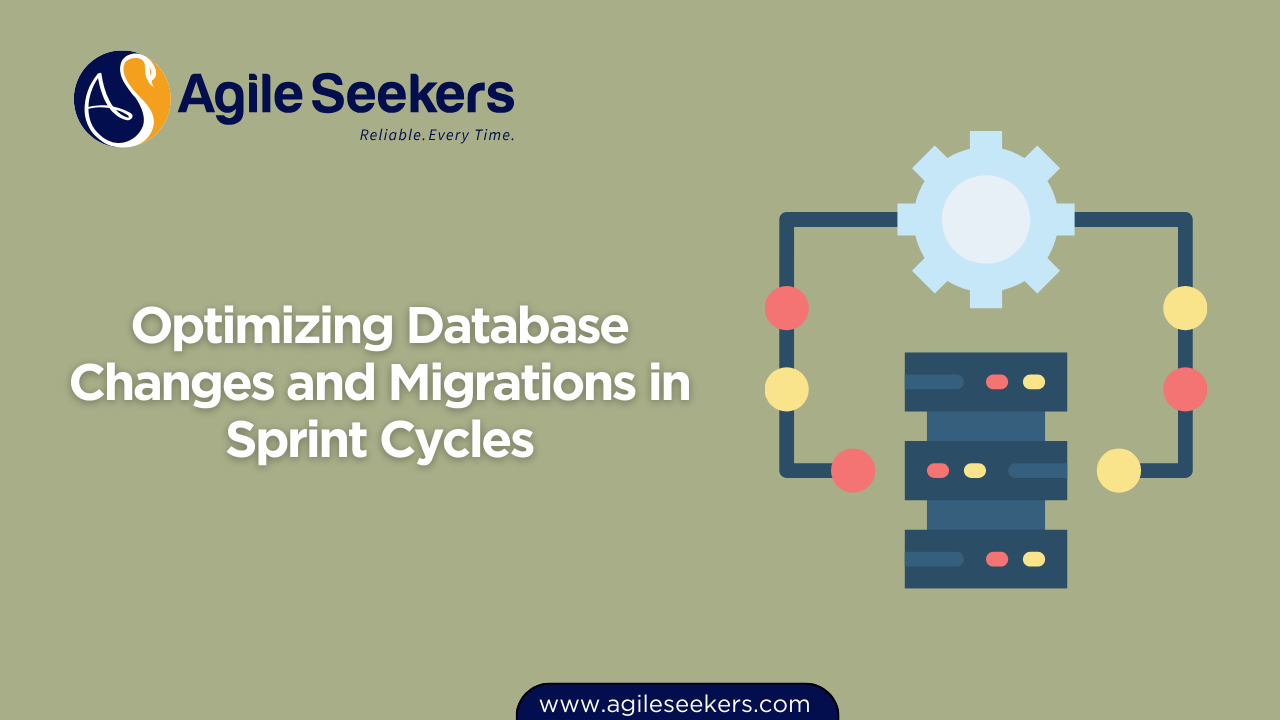Optimizing Database Changes and Migrations in Sprint Cycles

Database changes are often a bottleneck in agile delivery. Unlike application code, which can be rolled forward or backward with ease, database schema changes can introduce risk, downtime, and broken integrations. When working in Scrum Master-led teams, addressing database changes within sprint boundaries demands careful planning, automation, and team collaboration.
Why Database Migrations Matter in Scrum Projects
In a typical Scrum sprint, developers commit to delivering shippable features by the end of the iteration. However, when those features require schema updates, data transformations, or backward-incompatible changes, it can disrupt sprint goals. Without proper strategies, teams risk delayed releases, failed deployments, or worse—production outages.
Effective database migration practices help teams:
- Minimize manual intervention
- Maintain deployment velocity
- Prevent data loss or corruption
- Enable continuous delivery pipelines
Common Challenges in Managing Database Changes
Database work in agile teams brings several constraints:
- Irreversible Changes: Dropping a column or renaming a field without strategy can result in data loss.
- Environment Drift: Inconsistent schemas across dev, staging, and production can create hidden bugs.
- Deployment Coordination: DBAs and developers often operate on different schedules or toolchains.
- Testing Complexity: Schema changes are harder to test in isolation, especially with legacy data.
Best Practices for Optimizing Database Changes in Sprints
1. Adopt a Version-Controlled Migration Framework
Treat database code like application code. Tools like Flyway, Liquibase, or Django Migrations let teams manage schema and data changes through source control.
Every change should be part of a migration script that:
- Is idempotent and ordered
- Can be rolled forward and backward safely
- Is tested alongside application logic
2. Include Migration Tasks in Sprint Planning
During sprint planning, ensure that any story requiring database change includes migration as a task. This promotes visibility and capacity estimation. The Scrum Master plays a key role here in helping the team size these changes accurately. Learn more about the value of structured sprint planning in certified scrum master training.
3. Use a Forward-Compatible Migration Strategy
To reduce deployment risk, teams should use expand-and-contract patterns. For example:
- Add a new column but retain the old one.
- Update the application to use the new column.
- Deprecate and drop the old column in a future sprint.
This approach avoids breaking older application versions during deployment, especially in systems practicing canary or blue-green releases.
4. Automate Schema Migration in CI/CD Pipelines
Integrate schema migrations into your CI/CD process using tools like Flyway or Liquibase in Jenkins, GitLab CI, or GitHub Actions. Automation ensures consistency across environments and reduces human error.
Consider gating deployments with database smoke tests that check for schema validity post-deployment. This aligns with the practices taught in SAFe Scrum Master training, where DevOps integration is emphasized.
5. Maintain a Clean Rollback Plan
Even with careful planning, migrations may fail. Always include rollback scripts or logic in your deployment plan. For reversible changes, make sure down migration scripts are tested. For irreversible changes, take backups before execution and consider archiving critical tables.
6. Validate Migrations in Lower Environments
Don't wait until staging or production to test a migration. Use database clones, containerized test environments, or feature branches to run migrations early. Use production-like data sets when possible to expose edge cases.
7. Collaborate with DBAs Early
If your organization includes database administrators, loop them into refinement and planning early. Avoid last-minute approvals by sharing migration scripts during development. Open discussions reduce conflict and increase trust between DBAs and developers.
8. Treat Data Migration as a First-Class Citizen
Structural changes are only half the story. Teams often forget to migrate actual data. Whether it's populating new columns, merging datasets, or transforming types, these should be written as explicit tasks in your sprint backlog.
For complex operations, use background jobs or partitioned scripts to avoid locking large tables.
Examples of Migration Scenarios and Solutions
| Scenario | Suggested Solution |
|---|---|
| Adding a new column used by application | Create column with default values; update application; clean up old usage in next sprint |
| Changing column data type | Add new column with correct type; backfill data; switch references; drop old column later |
| Renaming a column | Add alias column; refactor application code; drop original after validation |
| Migrating large data sets | Batch migrations; run during off-peak hours; use locks cautiously |
Scrum Team Coordination for Seamless DB Changes
Database work shouldn’t be isolated to backend engineers or DBAs. Frontend, backend, QA, and DevOps engineers should collaborate on schema evolution as a cross-functional effort. Refinement meetings are ideal touchpoints to discuss DB impacts, test coverage, and integration points.
The Scrum Master helps in resolving external dependencies and shielding the team from last-minute disruptions, especially when coordinating deployments across multiple services.
Monitoring Post-Migration Effects
After deployment, it’s critical to monitor database performance, error rates, and query execution plans. Tools like Datadog, Prometheus, or New Relic can help catch anomalies early.
Log slow queries, deadlocks, and failed jobs for analysis. Teams should add verification scripts or monitoring alerts that confirm the migration succeeded without regressions.
Conclusion
Optimizing database changes during Scrum sprint cycles requires more than just technical skill—it requires planning, team alignment, and the right tooling. By managing schema changes like code, integrating migrations into CI/CD, and collaborating across roles, Scrum teams can deliver features without database bottlenecks.
To master these practices and gain hands-on skills in Agile development environments, explore our CSM certification and SAFe Scrum Master certification programs.
Also read - Using Feature Flags for Incremental Delivery in Scrum
Also see - Scrum-Based Strategies for Legacy Code Refactoring




















